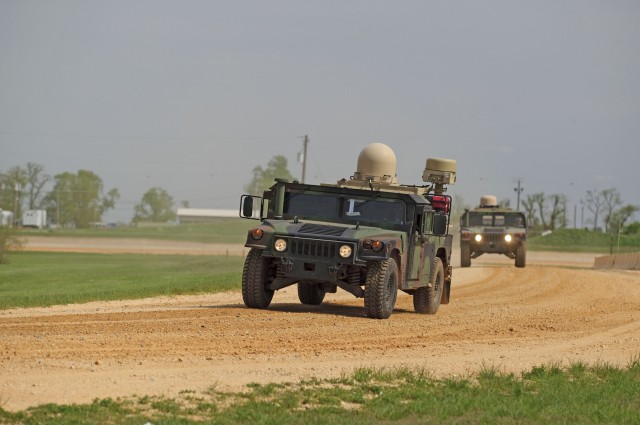ABERDEEN PROVING GROUND, Md. -- The second increment of Warfighter Information Network-Tactical (WIN-T) recently wrapped up its major developmental test, marking another key step in the Army's plans to establish a mobile communications grid for the battlefield.
"Army senior leadership has recognized that the cornerstone of modernization is the network, and WIN-T Increment 2 delivers that high capacity network on-the-move," said Lt. Col. Robert Collins, product manager (PdM) for WIN-T Increment 2. "Its fielding will be a significant milestone as we deliver the next-generation network that will transform how the Army operates and conducts its operational missions, both at-the-halt and now on-the-move, all the way down to the company level. It's a major step."
The WIN-T Increment 2 Production Qualification Test-Government, or PQT-G, was the major developmental test leading to the upcoming operational test and the eventual fielding, which is expected in 2012. The PQT-G, concluded on Aug. 5, was the largest instrumented test ever held at the Aberdeen Test Center, with WIN-T Increment 2 hardware and software installed in tactical vehicles spread out over five geographically dispersed sites. During the six-week event, hundreds of personnel collected thousands of gigabytes of data on the network's performance -- including how fast messages travel, how reliably they arrive at their destination, throughput assessments and whether the network is successfully prioritizing urgent messages like Medevac requests ahead of routine traffic.
"Our successes and accomplishments will be documented on paper and in reports, but the real sense of accomplishment comes in knowing we have provided the U.S. Soldier a capability that will help protect him from harm's way," said Andrew J. Pahutski, PdM WIN-T Increment 2/3
chief of test.
Similar to a home Internet connection, WIN-T Increment 1, the Army's current tactical network backbone, provides high-speed, high-capacity voice, data and video communications to units on the battlefield, at-the-halt or at-the-quick-halt. Unlike a home Internet connection, WIN-T Increment 2 will provide this network to a military formation while it is moving across the battlefield.
One of the key strengths of WIN-T Increment 2 lies in its ability to adapt to changing mission conditions in real time. By taking advantage of both terrestrial and satellite communications, units in austere environments such as mountainous regions can still connect and communicate through this self-forming, self-healing network. Should a component of the network become inoperable, it will restructure itself and continue providing the seamless communication needed to complete dynamic operational missions.
"The PQT-G was an opportunity to conduct a technical assessment, in this case of a division headquarters element with a full brigade-level deployment, in a controlled environment to make sure that we have a solid baseline understanding of technical performance before we deliver it to the Soldiers to conduct operational testing," Collins said.
The spring 2012 WIN-T Increment 2 Initial Operational Test and Evaluation (IOT&E;) will be conducted at White Sands Missile Range, N.M., with the 2nd Brigade/ 1st Armored Division (2/1 AD), which is also part of the Army's Brigade Modernization Command. The PQT-G was based on an operational mission set that is fundamentally built around the unit structure of 2/1 AD.
While the PQT-G focused on technical functionality, the upcoming operational test will focus on how the network benefits the overall execution of the Soldier's mission. The IOT&E;will demonstrate whether or not the network speeds decision cycles, enables increased operations tempo and increases speed of maneuver. The two tests complement one another, but they have two different purposes, Collins said.
To prepare for the IOT&E;, PM WIN-T will deliver early assets to 2/1 AD in August and September to provide hands-on exposure and early insights. The official New Equipment Training and fielding begins in January 2012, leading up to the IOT&E;, which is slated for spring of 2012.
"As the Army modernizes current software capabilities and integrates its stand alone technologies into a system of systems, WIN-T Increment 2 will provide the necessary network capabilities to enhance Army Modernization, and these pre-fielding tests provide the stage to make certain that it is well integrated and ready for the Warfighter," Collins said.
Related Links:
Program Executive Office Command, Control, Communications-Tactical (PEO C3T) website
Project Manager Warfighter Information Network-Tactical (WIN-T) website
Warfighter Information Network-Tactical (WIN-T) Increment 2 website




Social Sharing